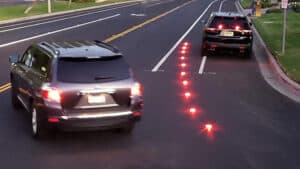Are you concerned about the potential explosion risk of old road flares stored in your garage?
While explosions are relatively rare, the chemical components in road flares can deteriorate over time, leading to instability and increased danger. This risk underscores the critical importance of implementing proper disposal methods to prevent hazardous incidents.
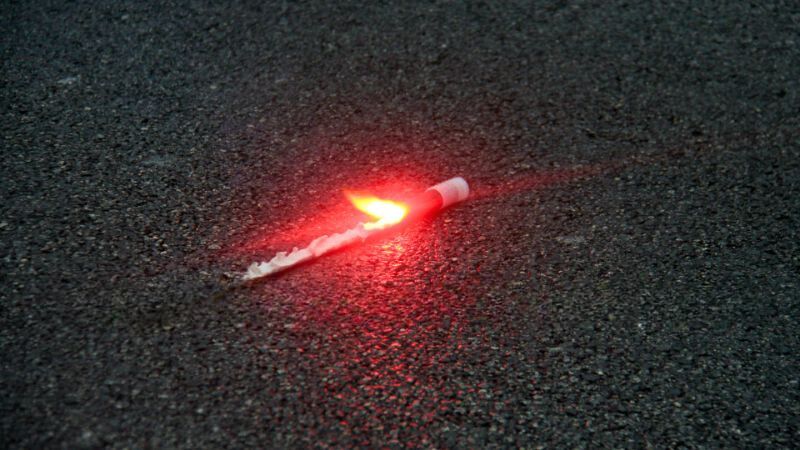
Understanding the risks associated with old road flares and the benefits of LED alternatives can greatly enhance your safety protocols and environmental responsibility.
Continue reading for a detailed look at road flare lifespan, proper disposal methods, and the many advantages of switching to LED technology.
Safely Disposing of Old Flares and Transitioning to LEDs
For the safe disposal of outdated road flares, it’s essential to contact your local hazardous waste disposal facility or seek out community disposal events specifically designed for such materials.
Making the switch to LED flares is a prudent decision; they offer environmental benefits, enhanced safety features, and reusability. Consider starting your own LED flare business to provide a superior alternative to traditional pyrotechnic flares.
How Long Do Road Flares Burn?
The burn time of conventional road flares varies significantly depending on several factors:
- Manufacturer:
Different brands produce flares with varying burn durations. For example, Orion Safety Products’ 30-minute road flares burn for approximately 30 minutes, while their 15-minute flares last about 15 minutes.
- Environmental Conditions:
- Temperature: Flares burn faster in warmer conditions and slower in colder temperatures.
- Wind: Strong winds can accelerate burn rate, potentially reducing the overall burn time.
- Humidity: High humidity may slightly extend burn time but could affect ignition reliability.
- Flare Size:
Larger flares generally burn longer than smaller ones. For instance:
- 15-inch flares typically burn for 20-30 minutes
- 20-inch flares can last up to 40-60 minutes
- Chemical Composition:
The specific chemical mixture used in the flare affects burn time and intensity. Most road flares use a mixture of strontium nitrate, potassium perchlorate, and a sulfur/sawdust fuel.
On average, traditional road flares burn for 15 to 60 minutes, providing sufficient time for emergency signaling in most situations.
Shelf Life and Storage of Road Flares
Road flares have a typical shelf life of 2 to 3 years from the date of manufacture. However, this can vary based on storage conditions:
- Optimal Storage Conditions:
- Temperature: Between 40°F and 90°F (4°C to 32°C)
- Humidity: Less than 80% relative humidity
- Location: Dry area away from direct sunlight
- Expiration Date Importance:
-
-
- Check dates regularly: At least once a year
- Replace expired flares: Even if they appear intact
- Performance degradation: Expired flares may fail to ignite or burn inconsistently
-
- Storage Containers:
-
- Use airtight, waterproof containers
- Store in original packaging when possible
- Avoid metal containers that can spark
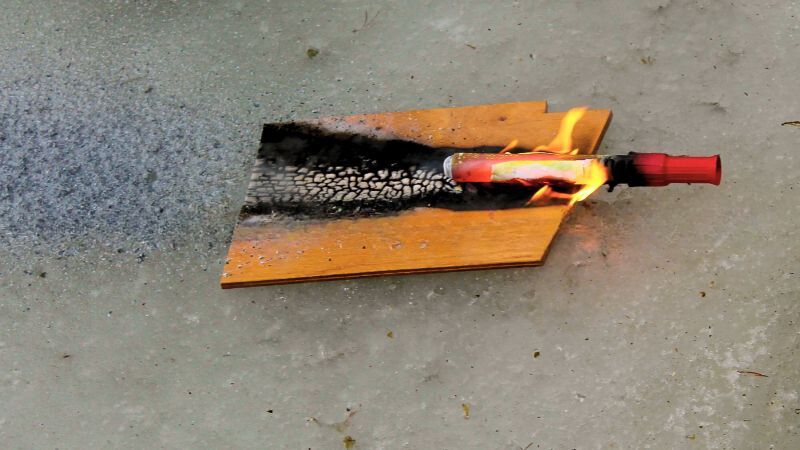
Can Road Flares Explode?
While rare, road flares can explode under specific circumstances:
- Factors Increasing Explosion Risk:
-
-
- Extreme heat exposure (above 150°F or 65°C)
- Physical damage to the flare casing
- Chemical degradation due to age or moisture exposure
-
- Chemical Composition and Stability:
-
-
- Main ingredients: Strontium nitrate (oxidizer), potassium perchlorate (oxidizer), sulfur and sawdust (fuel)
- These chemicals are stable when properly mixed and stored
- Degradation over time can lead to chemical imbalances, increasing instability
-
- Proper Storage to Minimize Risk:
-
- Temperature: Keep below 120°F (49°C)
- Humidity: Store in areas with less than 80% relative humidity
- Isolation: Keep away from other flammable materials, heat sources, and electrical equipment
Handling and Disposal of Expired Flares
Expired road flares require special handling and disposal:
- Never dispose of in regular trash or by burning
- Contact local authorities for disposal guidelines:
-
-
- Fire Department
- Police Department
- Hazardous Waste Facility
- Coast Guard (for marine flares)
-
- Disposal Methods:
-
-
- Community Hazardous Waste Collection Events
- Certified Hazardous Waste Disposal Facilities
- Some fire departments may accept expired flares for training purposes
-
- Transportation:
-
-
- Keep flares in original packaging or a sealed container
- Secure container to prevent movement during transport
- Do not transport large quantities without proper licensing
-
- Documentation:
-
- Some facilities may require documentation of flare type and quantity
- Keep a record of disposal for your own reference
By following these detailed guidelines, you can ensure the safe use, storage, and disposal of road flares, minimizing risks to yourself and the environment.
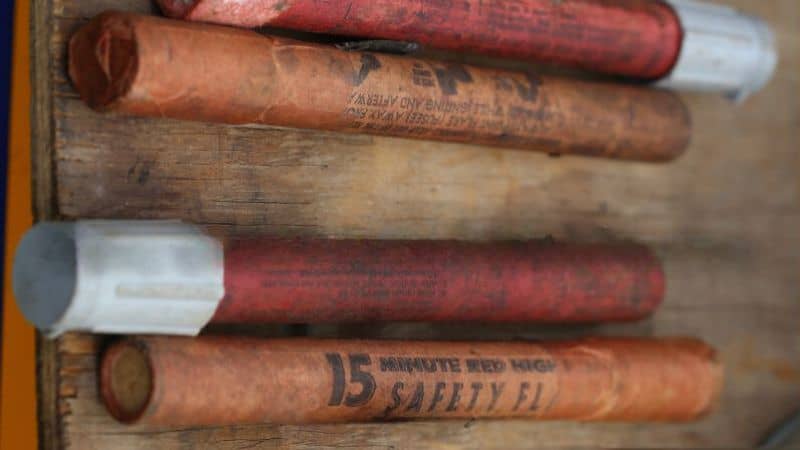
Why Is the Safe Disposal of Old Flares So Important?
Improper disposal of outdated road flares presents several significant hazards that emphasize the necessity for safe disposal practices:
- Environmental Contamination:
-
-
- Soil Pollution: Chemicals like strontium nitrate and potassium perchlorate can leach into soil, altering pH levels and nutrient composition.
- Water Contamination: These chemicals can seep into groundwater or run off into surface water, potentially affecting drinking water supplies and aquatic ecosystems.
- Long-term Impact: Contamination can persist for years, affecting plant growth, wildlife habitats, and human health.
-
- Fire Hazards:
-
-
- Spontaneous Ignition: Degraded flares may ignite unexpectedly in landfills or disposal sites.
- Wildfire Risk: In dry areas, improperly discarded flares can spark wildfires, especially during hot seasons.
- Urban Fire Danger: In densely populated areas, flare-induced fires can quickly spread to buildings and infrastructure.
-
- Explosion Risks:
-
-
- Chemical Instability: As flares age, their chemical components can become unstable, increasing the risk of unexpected detonation.
- Pressure Build-up: Sealed containers with old flares may experience pressure build-up, leading to explosive ruptures.
- Chain Reactions: An exploding flare could trigger nearby flammable materials, causing a larger explosion.
-
- Chemical Exposure Hazards:
-
- Direct Contact: Leaking chemicals can cause skin irritation, burns, or more severe reactions upon contact.
- Inhalation Risks: Vapors from degrading flares can cause respiratory issues, headaches, and nausea.
- Wildlife Impact: Animals may ingest or come into contact with leaked chemicals, leading to poisoning or habitat destruction.
What Are the Potential Dangers of Using Signal Flares?
Using signal flares carries several inherent risks, particularly if not handled correctly. The primary dangers include:
- Severe Burns: The intense heat generated by flares (which can reach temperatures of up to 2,900°F or 1,600°C) can cause severe, potentially life-threatening burns if they come into contact with skin.
- Uncontrolled Fires: Flares are highly combustible and can easily ignite surrounding materials, leading to uncontrolled fires. This risk is especially high in dry conditions or areas with abundant vegetation.
- Toxic Fume Inhalation: Burning flares release smoke and fumes containing harmful chemicals such as strontium nitrate and potassium perchlorate. Prolonged exposure to these fumes can pose serious health risks, including respiratory issues and potential long-term effects.
- Environmental Impact: The chemicals released from burning flares can have negative effects on the local environment, potentially harming plants and animals.
- Misuse and Accidents: Improper handling or accidental ignition can lead to serious injuries or property damage.
These hazards underscore the importance of using flares properly and taking necessary precautions, such as wearing protective gloves, ensuring a safe distance from flammable materials, and following all manufacturer guidelines and local regulations.
LED flares are a great alternative toTraditional Flares. They are non-toxic, do not produce flames, and can be visible for miles. LED flares can be used multiple times, making them more cost-effective in the long run.
Try Safer Alternatives With M&F LED Road Flares
Consider switching to M&F LED Road Flares for a safer, more sustainable option. Our products ensure high visibility, safety, and ease of use, marking a significant upgrade over traditional flares.
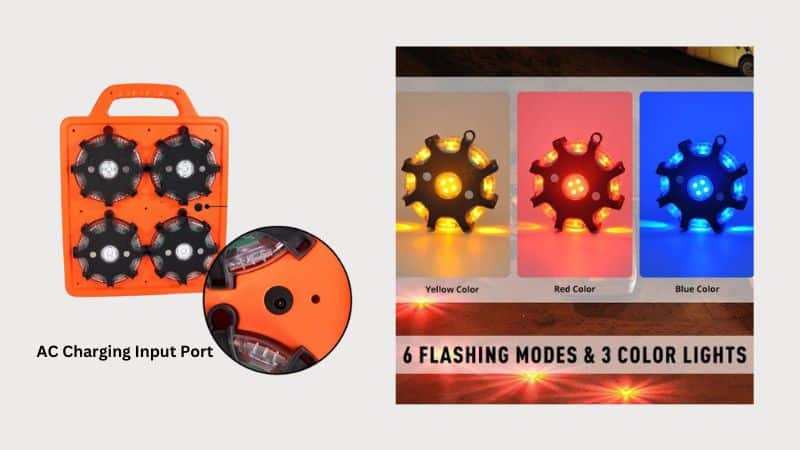
The M&F MF2020R LED Road Flares offer a modern, safer alternative to traditional flares. These advanced devices ensure high visibility and safety with features that set them apart from older models.
Key Features of MF2020R:
- Rechargeable Battery: Each light is equipped with a built-in 3.7V/3000mAh lithium battery, ensuring long-lasting performance and eliminating the need for disposable batteries.
- Automatic Operation: The lights turn on automatically upon removal from the case and synchronize instantly, providing fast deployment without the need to press any buttons.
- Waterproof Design: The MF2020R boasts a waterproof grade of IP68, making it suitable for use in various environmental conditions.
- Multiple Light Modes: It offers 6 flash patterns in 4 optional colors (Red, Amber, Blue, and a sequence of 3 colors), enhancing visibility and adaptability to different scenarios.
- Durable Construction: Made from robust PC and TPR materials, these flares are designed to withstand rough conditions.
- Magnetic Mounting: The magnetic bases allow for easy attachment to your vehicle, ensuring they stay securely in place.
- Compact and Portable: The handbox with high visibility reflective tape makes it easy to store and carry the lights safely.
Advantages Over Traditional Flares:
- Safety: Unlike traditional flares, the MF2020R eliminates the risk of accidental fires.
- Environmentally Friendly: The rechargeable nature of these lights reduces waste and promotes sustainable use.
- Ease of Use: Automatic operation and fast deployment ensure quick and hassle-free setup.
Maintenance Tips:
- Store your LED flares in a cool, dry place.
- Regularly check and recharge the batteries to ensure they are ready for use.
For boaters, outdoor adventurers, and anyone in need of reliable hazard warnings, the M&F MF2020R LED Road Flares are a crucial safety tool. They not only enhance your safety but also contribute to environmental protection. For more details, visit the M&F MF2020R product page.
Embrace the Future with LED Flares
Transitioning from traditional to LED road flares not only enhances safety but also contributes to environmental conservation. Proper disposal of old flares and the adoption of new technologies like M&F LED Road Flares pave the way for a safer, more sustainable approach to road safety.
Consider starting your own business in this promising field to help spread awareness and adoption of this crucial technology.

